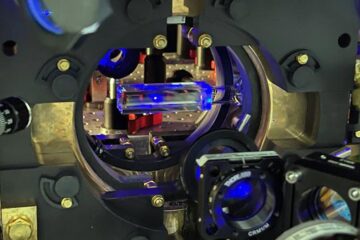Latest News

High-speed Genetic Analysis Looks Deep Inside Primate Immune System
This system, called the “major histocompatibility complex” or MHC, is found in all mammalian immune systems. Although MHC genes are complicated, variable and…

Banded Rocks Reveal Early Earth Conditions, Changes
Called banded iron formations or BIFs, these ancient rocks formed between 3.8 and 1.7 billion years ago at what was then the bottom of the ocean. The stripes…

Hubble Observes LCROSS Impact Event
Hubble's Wide Field Camera 3 (WFC3) and Space Telescope Imaging Spectrograph (STIS) were pointed just off the southern limb of the moon to look for a cloud of…

Radio Waves 'See' through Walls
“By showing the locations of people within a building during hostage situations, fires or other emergencies, radio tomography can help law enforcement and…

Common Herbicides and Fibrate Drugs Block Nutrient-sensing ‘Taste’ Receptor Found in Gut and Pancreas
Commonly used in agriculture and medicine, these chemical compounds were not previously known to act on the T1R3 receptor. The T1R3 receptor is a critical…

Key New Ingredient in Climate Model Refines Global Predictions
The results of the experiment at the Department of Energy’s Oak Ridge National Laboratory and at the National Center for Atmospheric Research are published in…











